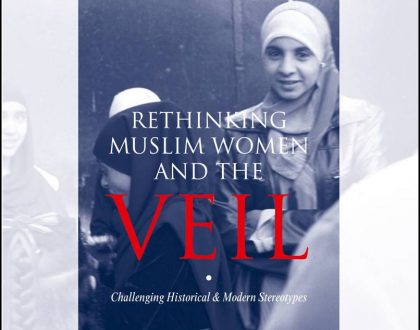Mapping the Terrain Research Constructs

Part 1
by: Dr. Ilham Nasser, Senior Researcher
November 2019
Values are commonly defined as the guidelines that lead someone’s life decisions and ways of living and thinking (Blanchard, 2018). In the empirical research we operationalize values into constructs that are measurable in order to record people’s beliefs and attitudes about those guidelines especially as they apply to Muslim societies.
To determine the ways we may measure those values, we conducted an extensive review of previous literature and added our own interpretations to the constructs and their relevance to our communities. The following provides a description of the values and the way we define them as measurable constructs in the empirical research. This review is in no way comprehensive, but it provides a brief view of our research orientation and the way we define the values and their fit within the human development model. The idea is that these values may be placed at the various states of consciousness with the possibility of moving back and forward as educational interventions and policies are put in place. Some of the values we included here are in fact part of the Spiral dynamics model (Beck et al., 2018) especially empathy and moral reasoning as people experience life conditions and move between states.
We divide the constructs into two groups where some are predictors and others are outcomes. This depended heavily on the review of the literature especially Meta analyses of previous studies conducted on the constructs selected (Andrews, 2000; Konrath, O’Brien, & Hsing, 2011). The study report (2018-2019) (check the website by the end of November, 2019 for a copy) attempts and for the first time to examine the way these constructs work together to motivate movement from lower to higher states of consciousness. We will start with three values and will follow with others in the next and last “Research notes” publication for this year.
Empathy (defined as a predictor)
It is the ability and willingness to care, feel, and take the perspective of others. Empathy has been mostly studied in the developmental psychology field; scholars such as Davis (1994) emphasize both cognitive and affective perspectives of empathy. Many cognitive theorists argue that empathy is grounded in social understanding and is used interchangeably as compassion to the state of being of others and their welfare, whereas moral and philosophical theorists suggest that empathy refers to an individual’s sympathetic response to others’ suffering (Horsthemke, 2015; Zahavi & Overgaard, 2012) and deliberate effort to understand, communicate, take and act based on others’ perspectives (Gair, 2011; Hojat, 2007). Research studies on empathy are also in abundance in the health care field and results mainly point out to the importance of developing a caring mentality early in life.
Empathy is an important value and skill to have and it is suggested to correlate with social competence and communication skills among other protective variables such as moral judgement and decrease in aggression (Ahmetoglu & Acar, 2016; Berliner & Masterson, 2015). Several studies in early childhood addressed teachers’ empathy and ways it is conveyed in interaction with children as it is also suggested that children as young as 18 months can help others and empathize with others (Sierksma, Thijs, & Verkuyten, 2014). This is also true for adolescence and university students who were taught empathy as part of a program on Emotional Intelligence and showed lower levels of hostility and aggression (Castello, Salguero, Fernandez-Berrocal & Balluerka (2013). Among a sample of college students showed that being employed and joining an academic club predicted higher empathy (Hudson-Fledge& Thompson, 2017). Finally, empathy was found to be instrumental in developing morality in previous studies (Paris, 2015; Masterson & Kersey, 2013) hence our choice of moral reasoning as one of our constructs.
Forgiveness (defined as an outcome variable)
It is the ability and willingness to let go of the hard feelings and the need to seek revenge from someone who has wronged me or committed a perceived injustice against me or others. Forgiveness is a broad construct and a subjective one which is perceived differently by individuals from different cultures or contexts. Enright and Gassin (1992) define forgiveness as the “willingness to abandon one’s right to resentment, negative judgment, and indifferent behavior toward one who unjustly hurt us, while fostering the undeserved qualities of compassion, generosity, and even love towards him or her” (p. 102). Various scholars define forgiveness while emphasizing the roles and responsibilities of the individual to reach the decision to forgive. For example, according to McCullough and Witvliet (2002) forgiveness can be perceived as a “response, a personality disposition and as a characteristic of social units” (P. 447). Forgiveness is also defined by Ahmed & Braithwaite (2005) to ameliorate and reduce the destructive cycle of conflict and violence between individuals and groups.
Forgiveness is “the emotional replacement of (1) hot emotions of anger or fear that follow a perceived hurt or offense, or (2) ridding of the unforgiveness that follows ruminating about the transgression, by substituting positive emotions such as unselfish love, empathy, compassion, or even romantic love” (Worthington, 2001). Nasser, Abu-Nimer, and Mahmoud (2014) suggest that forgiveness is a personal decision that originates from intrinsic motivation to let go while forgiveness education promotes understanding of different perspectives and reduces stereotypes (Abu-Nimer, 2001). Studies have found forgiveness to be aligned with psychological health and linked to values such as empathy, gratitude, and life satisfaction. Participants in studies that investigated these correlations suggested that people with higher empathy and gratitude are more forgiving (Marigoudar & Kamble, 2014).
Moral reasoning (defined as a predictor)
Defined as the ability and willingness to make determinations about right and wrong and act on those especially making ethical decisions based on that understanding when facing an ethical dilemma (Rest, 1984). Moral reasoning is developmental and classical theorists such as Kohlberg (1984) suggested that individuals develop the highest level of moral reasoning when they make decisions based on ethical principles without considering their own interests and/or benefits (Wells & Schminke, 2001). In a study among teachers Temli, Sen & Akar (2013) suggested that pre-service teachers defined morality based on universal values such as honesty and respect. Moral education may promote healthy moral decision making despite the fact that it is missing in public schooling in the United States, for example (Brimi, 2009). Professional ethics programs and training can promote moral reasoning by enhancing individuals’ knowledge in how to behave ethically when facing an ethical dilemma (Jones, 2009).
Research in the field of moral reasoning and its relationship with other constructs is sparse in Muslim societies (Teymoori, Heydari, Nasiri, 2014). A new program named “Virtue education” in the United Arab Emirates aims to promote moral education that is “part of the national strategic ambition to develop a progressive, enlightened country, where its residents share a culture despite the diversity” (Pring, 2019, P. 297). The problem arises when some education systems try to “force” certain sets of values into the education system and the community in general and call it moral education (Brimi, 2009). Here we aim to shed light on the perception of Muslim youth regarding moral reasoning and rationalization in order to make recommendations for authentic and well-rounded programming in moral reasoning and other areas as part of a comprehensive plan to infuse values in the development of learners of all ages.[i]
[i] For a complete list of references, see the 2018-2019 report on “Mapping the Terrain.”
Part 2: Mapping the Terrain Research Values and Constructs
by: Dr. Ilham Nasser, Senior Researcher and Dr. Maryam Saroughi, Researcher
December 2019
Community Mindedness
We define community mindedness as seeing the self as interconnected with and acting for the benefit of an inclusive whole. This construct is significant and unique for our study because of the various cultural contexts of the countries engaged with us in the research and because even within Muslim societies each community has unique needs and characteristics. Community mindedness may be also infused in the minds of youths through the curriculum and the pedagogy, making it a value as well as a skill that may be attained in learning (Longo, 2013).
To promote community mindedness, formulation of a framework which considers different perspectives and ideas to enhance collaborative thinking and positive interaction among the community members is necessary. Developing this framework is accomplished by community leaders and scholars who are willing to utilize critical thinking and problem-solving skills and are willing to be open-minded and collaborative with different groups in a community. Service in community agencies and organizations (especially in the West) is one way of introducing youths to their community and giving them the opportunity to understand their community’s needs. This promotes community mindedness and results in youth engagement. Consequently, this can advance youths’ sense of belonging to a greater community (McIntosh, Metz, & Youniss, 2005). There is also empirical evidence for the correlation between empathy and community involvement (Lawford & Ramey, 2017), keeping in mind that community mindedness doesn’t necessarily lead to involvement. Yet Lawford and Ramey (2017) suggest that serving others is “a key predictor of community involvement” (p. 133). Social relationships that play a role in how involved youths are in their communities and how involved teachers are with peers in schools also predicted their involvement with other stakeholders such as parents and the larger community (Preston, 2013).
Religiosity
Defined as the degree of influence one’s faith has on his/her values, behaviors and everyday life. According to Huber and Huber (2012), religiosity consists of different dimensions such as public practice, private practice, religious experience, ideology, and intellect. These dimensions together can be considered as representative of the total of religious values and how these values are shaped and practiced in peoples’ lives. As Teymoori, Heydari, and Nasiri (2014) state, “Religion is a social institution that dramatically influences individuals’ behaviors and daily actions as well as their social and political orientations” (p. 93). Many scholars argue that people seek religion when they are experiencing any kind of stress or hardship, and religion can protect individuals from different mental health issues such as depression and anxiety. According to this perspective, religion fulfills the human need for security and security is one of the basic needs of humans and a foundation for self-actualization (Maslow, 1943, 1954). Recent studies suggest a close relationship between healthy emotional functioning and religion. According to Foster and Armstrong (2017), “Self-regulation, the formation of relationships, and a sense of a separated self are deeply rooted in trust, as is the establishment of love, hope, and courage, which are integral to spiritual and religious experience and development” (p. 141). Religiosity is defined uniquely in this study as a process that is developmental and leads to tawḥīd as the ultimate manifestation of Muslim consciousness.
Based on the work in the area of liberation theology and progressive education, the concept of critical religious thinking emerged as a lacking area where the pedagogy of religiosity is at the center instead of religious knowledge (Wang, 2013). This, of course, is less common than the use of the replacement term “spirituality,” which came to indicate the ability to be a believer and a spiritual person but not necessarily a religious one. It also seems that spirituality is used widely to describe variations of beliefs and faith while in Muslim societies, where most of the population is religious, spirituality seems to be a less common term to use. Regardless of the definition or terminology used, we have empirical support for the notion that being spiritual or religious doesn’t happen in a vacuum but is a complex and a developmental process. The stage theory of faith development by Fowler (1991) illustrates this by suggesting that the experiences in each stage are influenced by close others and the surroundings.
Self-efficacy
In social cognitive theory, Bandura (1986) suggests that self-efficacy is a key construct which positively and strongly correlates with one’s cognitive and behavioral engagement in a certain task. Self-efficacy is defined by Bandura (1986, 1997) as a person’s belief in his or her ability to organize and execute certain behaviors that are necessary to become successful in a given task. Self-efficacy affects how people think, feel and behave. It influences one’s decision to initiate an action, the types of activity and the level of effort, persistence and time that one is willing to consider in completing certain tasks. Many studies support Bandura’s claim that a person’s beliefs in his or her ability to be successful in a task play a more important role in success than the capability itself. Self-efficacy is malleable and is influenced by four main sources: past performance accomplishment or mastery, vicarious experience, social persuasion, and physiological/psychological states (Bandura, 1986).
Mastery, or enactive experience is a source of self-efficacy, which is influenced by one’s belief about the level of success in his or her previous performance in the same or similar tasks. When learners experience success in an academic task, they develop more positive self-efficacy beliefs and a sense of mastery in doing similar tasks and therefore are more motivated to initiate and complete that task. The second source of self-efficacy, vicarious experience, is a source influenced by modeling. When one realizes that another person with similar characteristic or background is capable of success in a certain task, one becomes more motivated and develops more positive beliefs in one’s own ability to succeed in a same or similar task. The third source of self-efficacy, social persuasion, refers to the messages that one receives from others regarding his/her own ability and in being able to successfully complete a desired task. Social persuasion can be transferred in different forms. Another source of self-efficacy is physiological/ psychological states. Self-efficacy is a malleable and context-related variable influenced by emotional and situational conditions. Positive emotions such as pride and joy have a positive correlation with positive sense of efficacy, while anxiety, sadness and other negative feelings lower someone’s perception of his/her capability and beliefs in being able to perform a task. Considering these four sources of self-efficacy by educators is very important in promoting student’s motivation, academic achievement, and persistence.
Sense of Belonging
Belongingness is a basic human need, the fulfillment of which is necessary for a person’s progress toward self-actualization (Maslow, 1962). It is an important source of well-being for all individuals (Baumeister & Leary, 1995). Belongingness, or sense of belonging, is defined as an individual’s feeling of identification with a certain group (Tovar & Simon, 2010). Pittman and Richmond (2008) defined sense of belonging as connectedness to one’s institution and perception of fitting into an institution (Pittman & Richmond, 2007). A strong predictor of sense of belonging to any community or institution is perceived social support which is a factor positively correlated with coping mechanisms, persistence and physical and socioemotional well-being. Sense of belonging is a context-related concept which is influenced by environmental and situational variables. In an academic institution, sense of belonging is defined as a student’s perception of being supported, accepted, respected, and included in that institution (Goodenow, 1993). Students who perceive that they have positive interactions and good relationships with their peers and teachers can develop a stronger sense of belonging. In educational settings, sense of belonging is found to be one of the strongest predictors of students’ positive affect, life satisfaction and self-efficacy (Saroughi, 2019). Students’ sense of belonging is related to their integration into their institutional interests, their relationships with faculties and peers, participation in campus life, and curricular and extra-curricular activities (Astin, 1999). On the other hand, students’ positive interactions and relationships with their campus agents (peers, faculties and staffs) increases students’ sense of belonging which in turn promotes their academic achievement and well-being.



